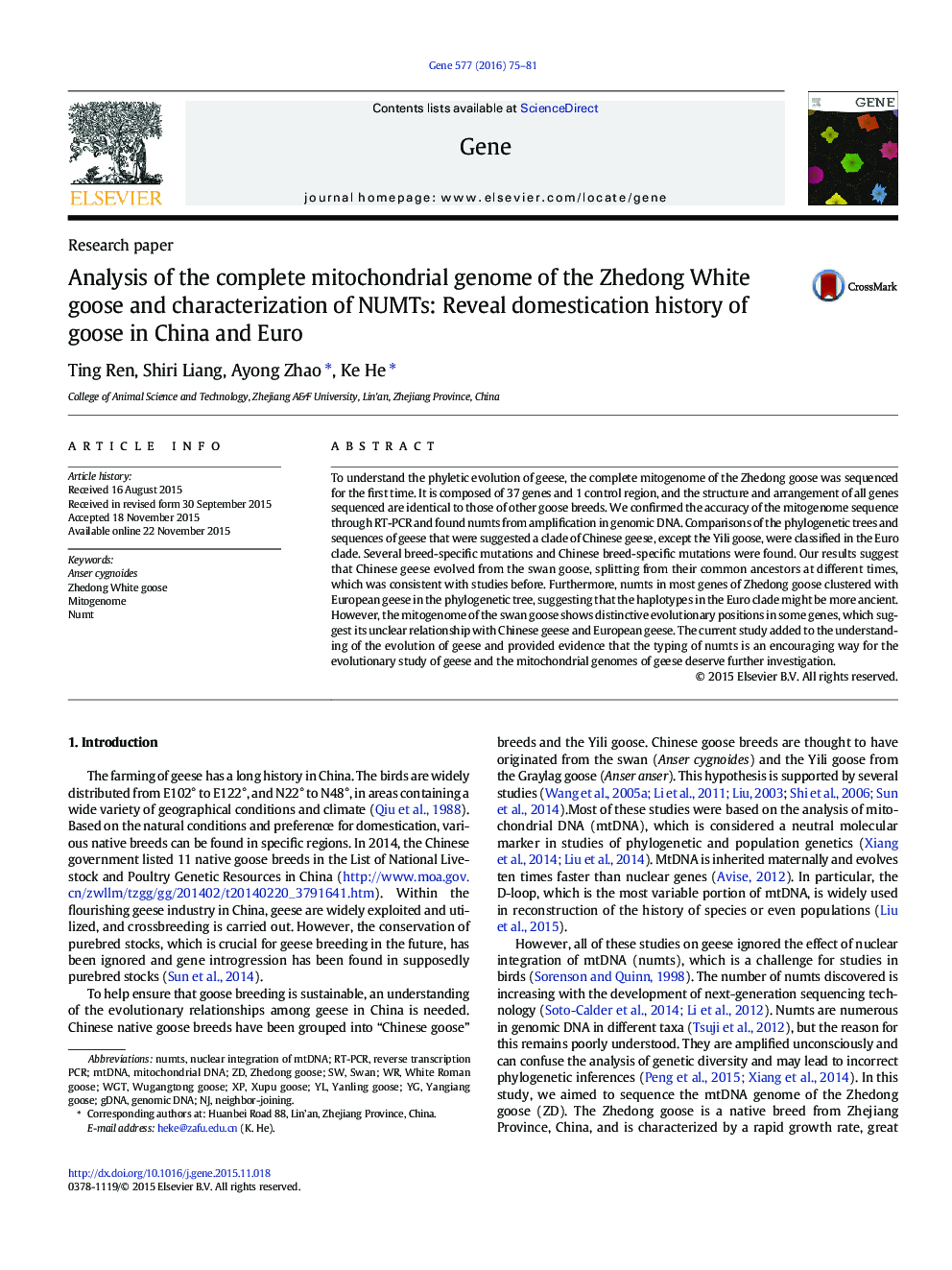| Article ID | Journal | Published Year | Pages | File Type |
|---|---|---|---|---|
| 2815205 | Gene | 2016 | 7 Pages |
•The complete mitogenome of the Zhedong goose was sequenced for the first time.•Numts in most genes of ZD suggested the haplotypes in Euro might be more ancient.•Distinctive evolutionary position of SW suggest mtDNA of geese need scrutiny.
To understand the phyletic evolution of geese, the complete mitogenome of the Zhedong goose was sequenced for the first time. It is composed of 37 genes and 1 control region, and the structure and arrangement of all genes sequenced are identical to those of other goose breeds. We confirmed the accuracy of the mitogenome sequence through RT-PCR and found numts from amplification in genomic DNA. Comparisons of the phylogenetic trees and sequences of geese that were suggested a clade of Chinese geese, except the Yili goose, were classified in the Euro clade. Several breed-specific mutations and Chinese breed-specific mutations were found. Our results suggest that Chinese geese evolved from the swan goose, splitting from their common ancestors at different times, which was consistent with studies before. Furthermore, numts in most genes of Zhedong goose clustered with European geese in the phylogenetic tree, suggesting that the haplotypes in the Euro clade might be more ancient. However, the mitogenome of the swan goose shows distinctive evolutionary positions in some genes, which suggest its unclear relationship with Chinese geese and European geese. The current study added to the understanding of the evolution of geese and provided evidence that the typing of numts is an encouraging way for the evolutionary study of geese and the mitochondrial genomes of geese deserve further investigation.
